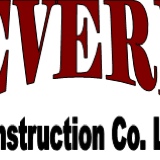Information
-
Document No.
-
Audit Title
-
Client / Site
-
Conducted on
-
Prepared by
-
Location
-
Personnel
Abrasive Wheel Equipment - Grinders
-
Is the work rest used and kept adjusted to within 1/8 inch of the wheel?
-
Is the adjustable tongue on the top side of the grinder used and kept adjusted to 1/4 inch?
-
Do side guards cover the spindle, nut and flange and 75% of the wheel diameter?
-
Are googles always worn when grinding?
-
Is the maximum RPM rating of each abrasive wheel compatible with the RPM rating of the grinder?
-
Does each grinder have an individual on and off control switch?
-
Is each electrically operated grinder effectively grounded?
-
Before new abrasive wheels are mounted, are they visually inspected or ring tested?
Confined Space
-
Are appropriate atmospheric tests performed to check for oxygen deficiency, toxic substances or explosive concentrations in the confined space before entry?
-
Is adequate illumination provided for the work to be performed in the confined space?
-
Is the atmosphere inside the confined space frequently tested or continuously monitored during conduct of work?
-
Is there an assigned safety standby, when required, whose sole responsibility is to watch the work in progress, and render assistance?
-
Is the standby employee appropriately trained and equipped to handle an emergency?
-
Are the stand by employee and other employees prohibited from entering the confined space without lifelines and respiratory equipment if there is any question as to the cause of an emergency?
-
Is approved respiratory equipment required if the atmosphere inside the confined space cannot be made acceptable?
-
Is all portable electrical equipment used inside the confined spaces either grounded and insulated or equipped with ground fault protection?
-
Whenever combustion type equipment is used in a confined space, are provisions made to ensure the exhaust gases are vented outside of the enclosure?
-
If the confined space is below ground and near areas where motor vehicles will be operating, is it possible for vehicle exhaust or carbon monoxide to enter the space?
Electrical
-
Do you specify compliance with OSHA for all contract electrical work?
-
Are all employees required to report as soon as practicable any obvious hazard to life or property observed in connection with electrical equipment or lines?
-
Are portable electrical tools and equipment grounded or double insulated?
-
Do extension cords being used have a grounding conductor?
-
Are multiple plug adapters prohibited?
-
Are cords with frayed or deteriorated insulation or exposed wiring repaired or replaced promptly?
-
In wet or damp locations, are electrical tools and equipment appropriate for the use or location or otherwise protected?
-
Is the location of electrical power lines and cables (overhead and underground) determined before digging?
-
Is the use of metal ladders prohibited in areas where the ladder or the person using the ladder could come in contact with energized parts of equipment?
Employer Posting
-
Is the required OSHA workplace poster displayed in a prominent location where all employees are likely to see it?
-
Are emergency telephone numbers posted where they can be readily found in case of an emergency?
-
Is the Summary of Occupational Illnesses and Injuries posted during the month of February?
Environmental Controls
-
Are all work areas properly illuminated?
-
Are all employees instructed in proper first aid and other emergency procedures?
-
Are employees aware of the hazards involved with the various chemicals they may be exposed to in their work environment?
-
Is employee exposure to chemicals in the workplace kept within acceptable levels?
-
Are wet methods used, when practicable, to prevent the emission of asbestos fibers, silica dust and similar hazardous materials?
-
Are engineering controls examined and maintained or replaced on a scheduled basis?
-
Is personal protective equipment provided, used and maintained wherever required?
-
Are there written standard operating procedures for the selection and use of respirators where needed?
-
Are restrooms kept clean and sanitary?
-
Are employees' physical capacities assessed before they are assigned to jobs requiring heavy work?
-
Are employees instructed in the proper manner of lifting heavy objects?
-
Are employees screened before assignment to areas of high heat to determine if their health condition might make them more susceptible to having adverse reaction?
-
Are universal precautions observed where occupational exposure to blood or other potentially infectious materials can occur and in all instances where differentiation of types of body fluids or potentially infectious materials is difficult or impossible?
Excavations
-
Does the excavation have shielding or shoring if the trench is 5 feet deep?
-
Does the excavation have easily accessible entry and exit?
-
If the excavation has to remain open while unattended does it have barricading around it to prevent any unauthorized personnel from enterin the area?
-
If the excavation is using the sloping method, it it at a 1.5:1 ratio?
-
Is the spoil pile a minimum of 2 feet from the edge?
-
Is entry and exit provided every 25 feet?
Fire Protection
-
Are proper fire extinguishers provided in adequate number and type?
-
Are fire extinguishers mounted in readily accessible locations?
-
Are fire extinguishers recharged regularly and noted on the inspection log?
-
Are employees periodically instructed in the use of extinguishers and fire protection procedures?
Flammable & Combustible Materials
-
Is liquified petroleum gas stored, handled and used in accordance with safe practices and standards?
-
Are "NO SMOKING" signs posted on liquified petroleum gas tanks?
-
Are liquified petroleum storage tanks guarded to prevent damage from vehicles?
-
Are all solvent wastes and flammable liquids kept in fire resistant, covered containers until they are removed from the worksite?
-
Are firm separators placed between containers of combustibles or flammables, when stacked one upon another, to assure they support stability?
-
Are fire extinguishers selected and provided for the types of materials in areas where they are to be used?
-
Are appropriate fire extinguishers mounted within 75 feet of outside areas containing flammable liquids, and within 10 feet any inside storage for such materials?
-
Are extinguishers free from obstructions or blockage?
-
Are all extinguishers serviced, maintained and tagged at intervals not to exceed one year?
-
Are all extinguishers fully charged and in their designated places?
-
Are "NO SMOKING" signs posted where appropriate in areas where flammable or combustible materials are used or stored?
-
Are safety cans used for dispensing flammable or combustible liquids at point of use?
-
Are all spills of flammable or combustible liquids cleaned up promptly?
-
Are "NO SMOKING" rules enforced in areas involving storage and use of hazardous materials?
Fueling
-
Is it prohibited to fuel an internal combustion engine with a flammable liquid while the engine is running?
-
Are fueling operations done in such a manner that likelihood of spillage will be minimal?
-
When spillage occurs during fueling operations, is the spilled fuel washed away completely, evaporated or other measures taken to control vapors before restarting the engine?
-
Are fuel tank caps replaced and secured before starting the engine?
-
In fueling operations, is there always metal contact between the container and the fuel tank?
-
Are fueling hoses of a type designed to handle the specific type of fuel?
-
Is it prohibited to handle or transfer gasoline in open containers?
-
Are open lights, open flames or sparking, or arcing equipment prohibited near fueling or transfer of fuel operations?
-
Is smoking prohibited in the vicinity of fueling operations?
-
Where fueling or transfer of fuel is done through a gravity flow system, are the nozzles of the self closing type?
Hand Tools & Equipment
-
Are tools and equipment (both company and employee owned) used by employees at their workplace in good condition?
-
Are hand tools such as chisels, punches, etc. which develop mushroomed heads during use, reconditioned, or replaced as necessary?
-
Are broken or fractured handles on hammers and similar equipment replaced promptly?
-
Are worn or bent wrenches replaced regularly?
-
Are employees made aware of the hazards caused by faulty or improperly used hand tools?
-
Are appropriate safety glasses, face shields, etc. used with hand tools or equipment that might produce flying materials?
-
Are tool handles wedged tightly in the head of all tools?
-
Are tool cutting edges kept sharp so the tool will move smoothly without skipping or binding?
-
Are tools stored in dry, secured locations where they won't be tampered with?
Hazardous Chemical Exposure
-
Are employees trained in the safe handling practices of hazardous chemicals?
-
Are employees aware of the potential hazards involving various chemicals stored in the workplace?
-
Is employee exposure to chemicals kept within acceptable levels?
-
Are eye wash fountains and safety showers provided in areas where corrosive chemicals are handled?
-
Are all employees required to use personal protective clothing and equipment when handling chemicals?
-
Are flammable or toxic chemicals kept in closed containers when not in use?
-
Have standard operating procedures been established and are they being followed when cleaning up chemical spills?
-
Are employees prohibited from eating in areas where hazardous chemicals are present?
-
Is personnel protective equipment provided, used and maintained wherever necessary?
-
Are you familiar with the Threshold Limit Values or Permissible Exposure Limits of airborne contaminants and physical agents used in your workplace?
-
If combustible engines are used, is carbon monoxide kept within acceptable levels?
Hazardous Substances Communication
-
Is there a list of hazardous substances used in your workplace?
-
Is there a current written exposure control plan for occupational exposure to bloodborne pathogens and other potentially infectious materials, where applicable?
-
Is there a written hazard communication program dealing with Material Safety Data Sheets (MSDS), labeling and employee training?
-
Is each container for a hazardous substance labeled with product identity and a hazard warning (communication of the specific health hazards and physical hazards) ?
-
Is there a Material Safety Data Sheet readily available for each hazardous substance used?
-
Is there an employee training program for hazardous substances?
-
Does this program include:
-
An explanation of what an MSDS is and how to use and obtain one?
-
MSDS contents for each hazardous substance or class of substances?
-
An explanation of "Right to Know"?
-
Identification of where employees can see the employer's written hazard communication program and where hazardous substances are present in their work areas?
-
The physical and health hazards of substances in the work area, and specific protective measures to be used?
-
Details of the hazard communication program, including how to use the labeling system and the MSDSs?
-
Does the employee training program on the bloodborne pathogens standard contain the following elements:
-
An accessible copy of the standard and an explanation of its contents?
-
A general explanation of the epidemiology and symptoms of bloodborne diseases?
-
An explanation of the modes of transmission of bloodborne pathogens?
-
An explanation of the employer's exposure control plan and the means by which employees can obtain a copy of the written plan?
-
An explanation of the appropriate methods for recognizing tasks and other activities that may involve exposure to blood and other potentially infectious materials?
-
An explanation of the use and limitations of methods that will prevent or reduce exposure, including appropriate engineering controls, work practices and personal protective equipment?
-
Information on the types, proper use, location, removal, handling, decontamination and disposal of personal protective equipment?
-
An explanation of the basis for the selection of personal protective equipment?
-
Information on the Hepatitis B vaccine?
-
Information on the appropriate actions to take and persons to contact in an emergency involving blood or other potentially infectious materials?
-
An explanation of the procedure to follow if an exposure incident occurs, including the methods of reporting the incident and medical follow-up that will be made available?
-
Information on post-exposure evaluations and follow-up?
-
An explanation of signs, labels and color coding?
-
Are employee trained in the following:
-
How to recognize tasks that might result in occupational exposure?
-
How to use practice and engineering controls and personal protective equipment and to know their limitations?
-
How to obtain information on the types, selection, proper use, location, removal, handling, decontamination and disposal of personal protective equipment?
-
Who to contact and what to do in an emergency?
Machine Guarding
-
Is there a training program to instruct employees on safe methods of machine operation?
-
Is there adequate supervision to ensure that employees are following safe machine operating procedures?
-
Is there a regular program of safety inspection of machinery and equipment?
-
Is all machinery and equipment kept clean and properly maintained?
-
Is sufficient clearance provided around and between machines to allow for safe operations, set-up and servicing, material handling and waste removal?
-
Is equipment and machinery securely placed and anchored when necessary, to prevent tipping or other movement that could result in personal injury?
-
Is there a power shut-off within reach of the operator's position at each machine?
-
Are manually operated valves and switches controlling the operation of equipment and machines clearly identified and readily accessible?
-
Are all emergency stop buttons colored red?
-
Are all moving chains and gears properly guarded?
-
Are machinery guards secure and so arranged that they do not offer a hazard in their use?
Material Handling
-
Are motorized vehicles and mechanized equipment inspected daily prior to use?
-
Are hooks with safety latches or other arrangements used when hoisting materials so that slings or load attachments won't slip off the hoist hooks?
-
Are securing chains, ropes, or slings adequate for the job?
-
When hoisting material or equipment, are provisions made to assure no one will be passing under the suspended loads?
Noise
-
Are there areas in the workplace where continuos noise levels exceed 85dba?
-
Is there an ongoing preventative health program to educate employees in:
-
Use of personal protection
-
Safe levels of noise exposure?
-
Effects of noise on employee health?
-
Have work areas where noise levels make voice communication between employees difficult been identified and posted?
-
Are noise levels being measured using a sound level meter and are records being kept?
-
Is approved hearing protective equipment available to every employee working in noisy areas?
-
If you use hearing protectors, are employees properly fitted and instructed in their use?
-
Are employees in high noise areas given periodic audio metric testing to ensure that you have an effective hearing protection system?
Personal Protective Equipment & Clothing
-
Are protective googles or face shields provided and worn where there is any danger of flying particles?
-
Are approved safety glasses required to be worn at all times in areas where there is a risk of eye injuries?
-
Are employees who need corrective lenses in working environments, required to wear only approved safety glasses, or use other medically approved precautionary procedures?
-
Are protective gloves provided and required where employees could be cut or where there is reasonably anticipated exposure to corrosive liquids or chemicals?
-
Are hard hats provided and worn where danger of falling objects exists?
-
Are hard hats inspected periodically for damage to the shell and suspension system?
-
Is appropriate foot protection required where there is risk of foot injuries from hot, corrosive, poisonous substances, falling objects, crushing or penetrating actions?
-
Is all protective equipment maintained in a sanitary condition and ready for use?
-
Do you have eye wash facilities within the work area where employees are exposed to injurious corrosive materials?
-
Is protection against the effects of occupational noise exposure provided when sound levels exceed those of the OSHA noise standard?
Portable Ladders
-
Are all ladders maintained in good condition, joints between steps and side rails tight, all hardware and fittings securely attached and moveable parts operating freely without binding or undue play?
-
Are non-slip safety feet provided on each ladder?
-
Are non-slip safety feet provided on each metal or rung ladder?
-
Are ladder rungs and steps free of grease and oil?
-
Is it prohibited to place ladders on boxes, barrels or other unstable bases to obtain additional height?
-
Are employees instructed to face ladder when ascending and descending?
-
Are employees prohibited from using ladders that are broken, missing steps, rungs or cleats, broken side rails or other faulty equipment?
-
Are employees instructed not to use the top step of ordinary stepladders as a step?
-
When portable ladders are used to gain access to elevated platforms, does the ladder always extend at least 3 feet above the elevated surface?
-
Is it required that when portable rung or cleat-type ladders are used, the base be so placed that slipping will not occur, or that it is tied or held in place?
-
Are portable metal ladders legibly marked with signs reading "CAUTION-do not use around metal equipment" or equivalent wording?
-
Are employees prohibited from using ladders other than its intended purpose?
-
Are employees instructed to only adjust extension ladders while standing at a base, not while standing on the ladder or from a position above the ladder?
-
Are metal ladders inspected for damage?
-
Are the rungs of ladders uniformly spaced at 12 inches, center to center?
Portable (Power Operated) Tools & Equipment
-
Are grinders, saws and similar equipment provided with appropriate safety guards?
-
Are power tools used with correct shield, guard or attachment recommended by the manufacturer?
-
Are portable circular saws equipped with guards above and below the base shoe?
-
Are circular saw guards checked to assure they are not wedged up, thus leaving the lower portion of the blade unguarded?
-
Are rotating or moving parts of equipment guarded to prevent physical contact?
-
Are all cord-connected, electrically operated tools and equipment actively grounded or of the approved double insulated type?
-
Are effective guards in place over belts, pulleys, chains, sprockets, on equipment?
-
Are portable fans provided with full guards or screens having openings of 1/2 inch or less?
-
Is hoisting equipment available and used for lifting heavy objects, and ate hoist ratings and characteristics appropriate for the task?
-
Are pneumatic and hydraulic hoses on power-operated tools checked regularly for damage?
Safety & Health Program
-
Do you have an active safety and health program in operation that deals with general safety and health program elements as well as the management of hazards specific to your worksite?
-
Is one person clearly responsible for the overall activities of the safety and health program?
-
Do you have a working procedure for handling in house employee complaints regarding safety and health?













